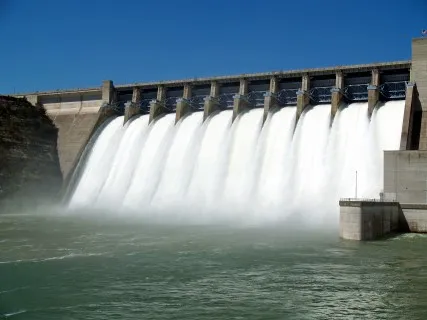
Asia's hydro power capacity ticked up by a mere 3.8% this year
No thanks to the awful dry spell in August.
According to Barclays, peak hydro power generation season has come and gone this year with little upside surprises. Despite the 6.5% hydro capacity growth so far this year, cumulative hydro power generation is up only 3.8%, attributed to dry weather during the peak month of August.
In the next four months, hydro power supply will fall to less than half of the level in peak months, from 110 bn kWh to around 50 bn kWh.
The gap will be mostly be filled by thermal power generation, which has seen tepid demand growth this year as a result of weak manufacturing activity and higher clean energy supply. In fact, we saw a rebound in thermal power demand in November, which increased 2.2% y/y compared to an average increase of only 0.3% for the first 11 months of 2015.
Here's more from Barclays:
While the near-term rebound in thermal generation is positive, we believe the market is putting more emphasis on the continuing overcapacity issue in the power sector and, more importantly, the implication on earnings after the power reform, where prices will be determined by supply and demand.
Thermal power generation rose to 353bn kWh in November as cold weather in Northern China drew demand for heat co-generation thermal power. Generation companies have accelerated their coal purchases in the past month as their inventory declined due to a higher burn rate.
Wind power curtailment was reported to be much higher than that in 2014, according to wind power companies, due to high heat demand in NE China, which requires thermal co-generation plants to supply hot water, and very high curtailment of wind power in Xinjiang province. However, wind power capacity continued to grow at 26% y/y as companies raced to complete projects before the end of the year to enjoy higher on-grid tariffs.
Utilization hours for nuclear power plants in November were lower compared to 2014, mainly due to idling of Hongyanhe unit 2 and 3 as a result of electricity oversupply in Liaoning. CGN Power (OW) announced measures to mitigate the problem in the future.








![Cross Domain [Manu + SBR + ABF + ABR + FMCG + HBR + ]](https://cmg-qa.s3.ap-southeast-1.amazonaws.com/s3fs-public/styles/exclusive_featured_article/public/2025-01/earth-3537401_1920_4.jpg.webp?itok=WaRpTJwE)
![Cross Domain [SBR + ABR]](https://cmg-qa.s3.ap-southeast-1.amazonaws.com/s3fs-public/styles/exclusive_featured_article/public/2025-01/pexels-jahoo-867092-2_1.jpg.webp?itok=o7MUL1oO)









 Advertise
Advertise


